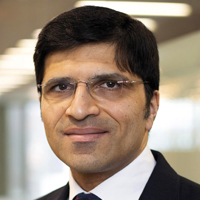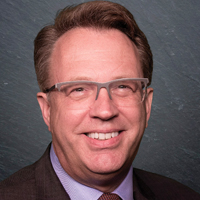
From artificial intelligence to digital assets, innovation is all the talk in finance. But as we think about the benefits of innovation and new financial products, it’s important to heed the lessons of the past. A particularly instructive example is the story of the London interbank offered rate, otherwise known as LIBOR.
Like the compact disc and Nintendo Gameboy, LIBOR became widespread in the 1980s. From humble beginnings, it grew unchecked and dramatically over the next 50 years, spreading into the far corners of the global financial system. Contracts, home mortgages, corporate debt—all used LIBOR. Ultimately, $400 trillion of global financial products referenced the benchmark rate.
But as the interbank lending market died out, LIBOR started to be based on mere estimates of what banks thought they would have to pay to borrow money. There was little oversight and few guardrails. Concerns were raised repeatedly that LIBOR was, at best, unreliable, and at worst, easily manipulated—as a 2012 international investigation confirmed.
The ensuing scandal threatened to undermine trust and confidence in the entire global financial system. Getting off LIBOR and rebuilding the global financial system on a safe foundation took enormous effort. This entailed over a decade of public-private partnerships and the coordination and cooperation of 19 international jurisdictions, which worked with the Financial Stability Board’s Official Sector Steering Group on LIBOR that we co-chair.
Through it all, many questioned whether our financial systems could ever make the transition away from LIBOR, once the world’s most important number, but there was really no other choice.
Every jurisdiction did its part, and indeed some are using the transition as an opportunity to modernize their banking and settlement systems. The result is a system of reference rates, namely risk-free or near risk-free rates, anchored in deep, credible, and liquid markets with guardrails to limit risks.
These tireless global transition efforts enabled the Euro, Swiss Franc, Sterling and Yen LIBOR panels to cease at the end of 2021. On June 30, 2023, another incredibly significant milestone was reached with the end of the final remaining LIBOR panel for U.S. dollar. Transitioning away from LIBOR has been one of the largest financial transformation projects we have seen and an undertaking we do not wish to repeat. Thus, we do not want to see the emergence of reference rates that share the same pitfalls as LIBOR. The global securities watchdog IOSCO has recently concluded its Review of Alternatives to USD LIBOR, which assessed the robustness of benchmarks developed as potential substitutes for LIBOR. The review identified varying degrees of vulnerabilities that replicate those of LIBOR, proving that we cannot be complacent in the face of potential new risks introduced to our financial system.
The moral of this story is that avoiding problems at the outset is far easier than fixing systems when they break. Replacing LIBOR was an enormous undertaking—the equivalent of building a new foundation under an existing home. The financial innovations of today need strong foundations from the start, with global alignment, so they don’t become the sources of systemic failures and costly repairs of tomorrow.

Nikhil Rathi is the Chief Executive of the UK Financial Conduct Authority.

John C. Williams is President and CEO of the Federal Reserve Bank of New York.
The views expressed in this article are those of the contributing authors and do not necessarily reflect the position of the New York Fed or the Federal Reserve System.










